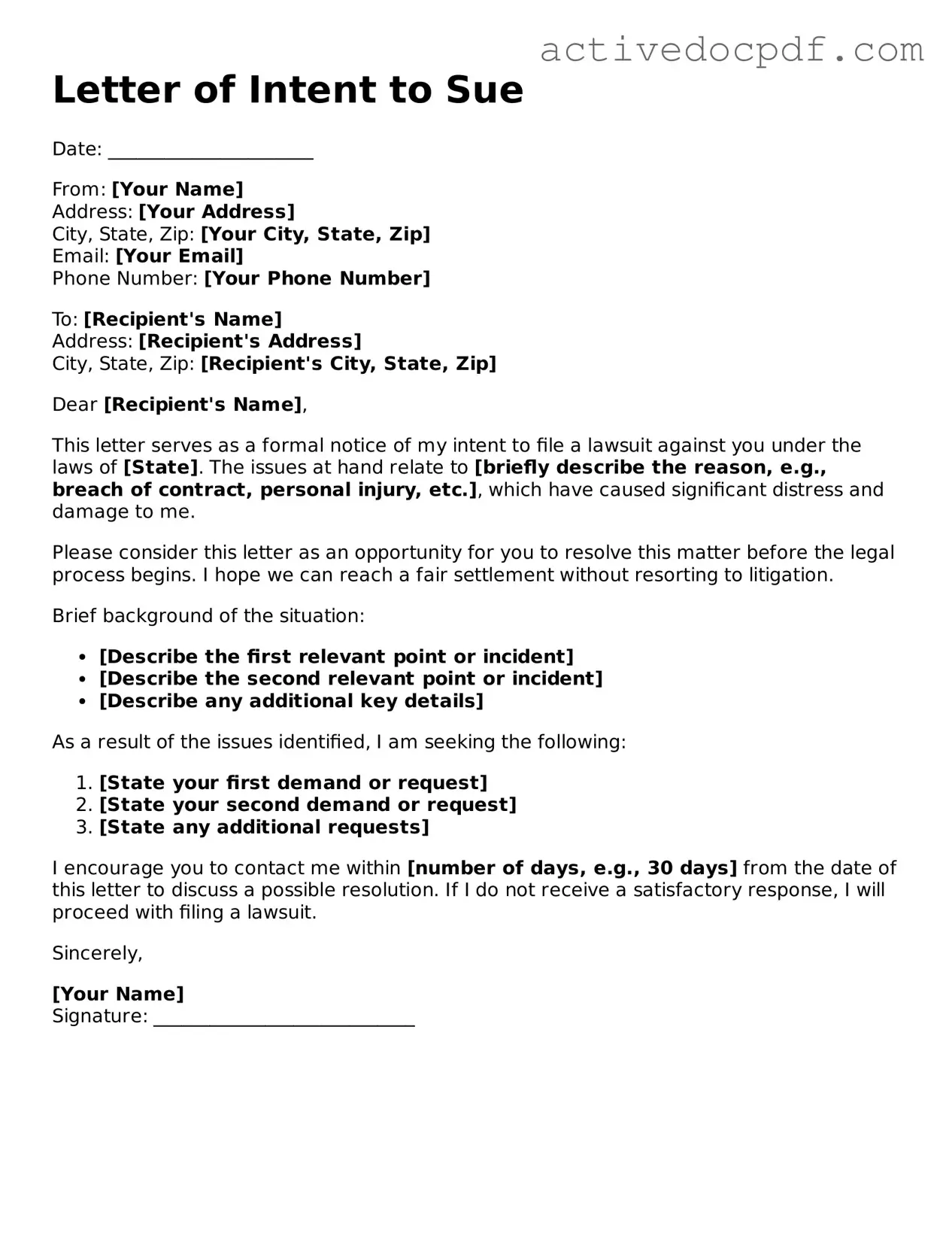Legal Letter of Intent to Sue Template
A Letter of Intent to Sue is a document that signals a party's intention to initiate legal action against another party. This form serves as a formal notice, outlining the grievances and the desire to resolve the issue before resorting to court. Understanding its purpose and proper use can be crucial for anyone facing potential legal disputes.
Edit Form Online
